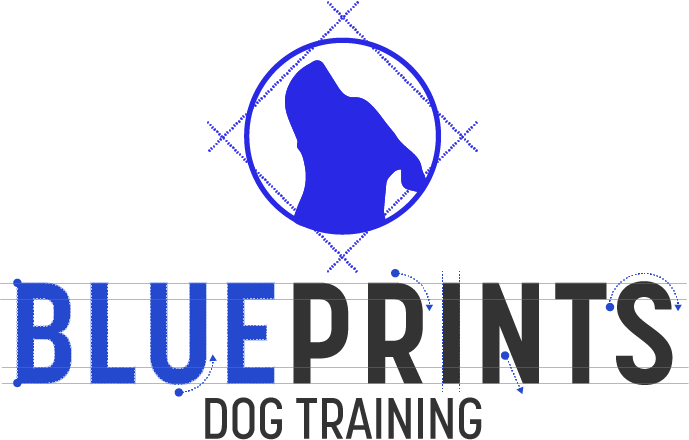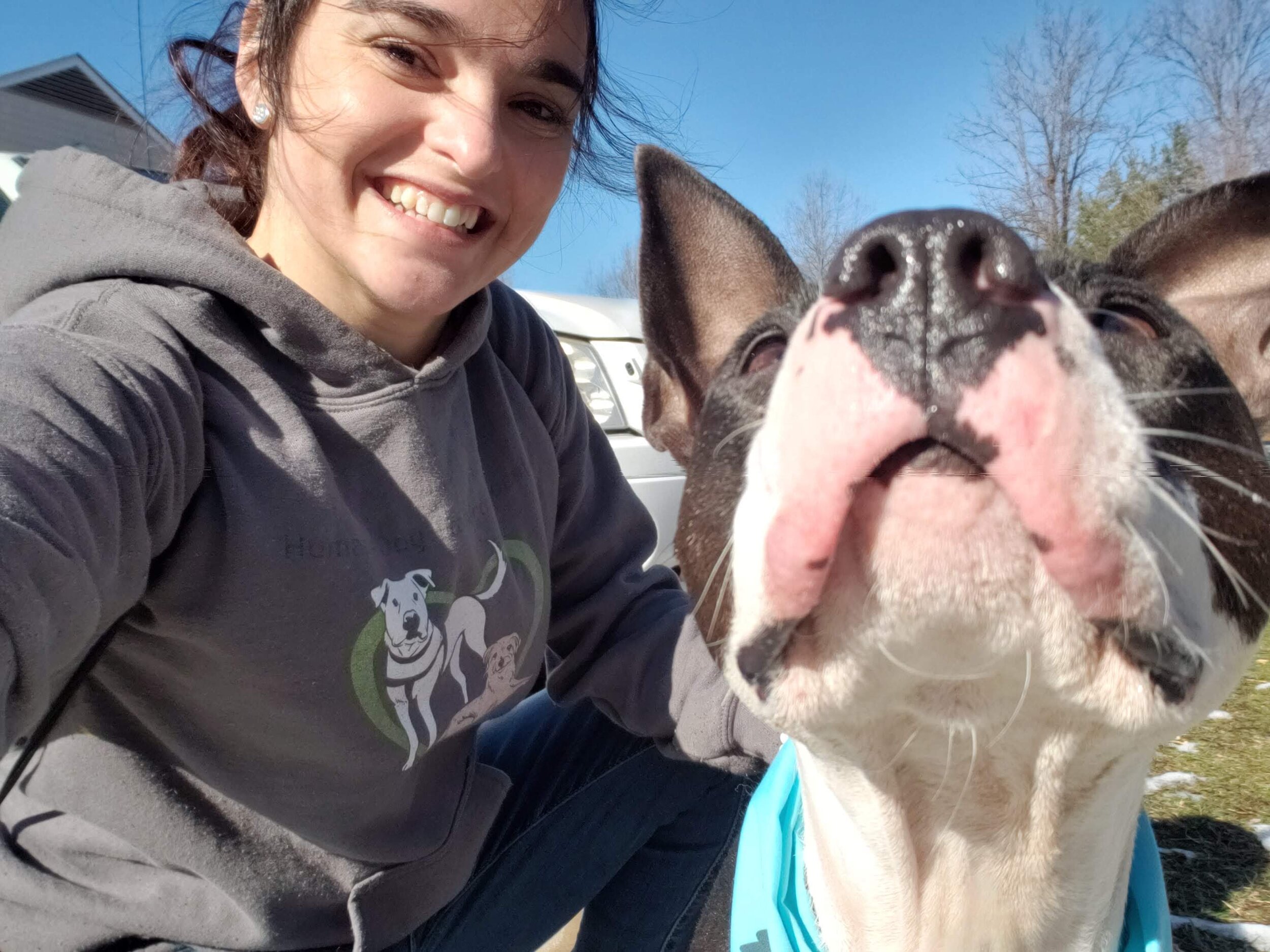How did I get here?
One of the most common questions I get is “How did you learn so much about dog training?” So, if you found yourself here, you’d probably like an answer to that question, too. In short, you need a true obsession and amazing luck at finding people see your skills and values and push you to succeed.
Here’s the long version:
For a long time I was always, “the animal kid.” My room was wall to wall animals. As a younger child it was all about marine life like Dolphins, Whales, Seals. Thanks 90s movies! (For any Gen-Z’s that missed these glorious opportunities, that would be classics like Flipper, Free Willy and Andre). One day I realized that motion sickness is an annoying complication to the career. Not to mention, I grew up in the foggy, seaside town of Richmond, CA where the water was always rough and mostly way too cold to enjoy. So that career was off the table early. Animal Planet continued to show me all the possible options for careers and I moved through the natural path from Marine Biologist, to Veterinarian, to Zookeeper, Conservationist and Animal Control Officer.
Early into high school I began pet-sitting for friends and family and moved on to develop a local client base of people who knew my parents. I met a wonderful woman who brought me on to help care for her Great Danes, Atlas, Titan and Phoebe. I’d never met such regal dogs. They were absolutely amazing and she was amazing with them. She allowed me to tag along with her to a Dog Show. I quickly realized there was far too much drama in ring sports for my liking, but I couldn’t get enough of her dogs. She asked me to continue working with Atlas and help keep up his leash skills to keep his muscles up and keep him ring ready. I started trialing different training tips that I’d gotten from my Grandfather and my Dad, who were the “dog people” of the family. I quickly realized that overpowering Atlas was not the way for me. Not only did I not want to hurt him, but Atlas came in at 170lbs and I came in at a whopping 95lbs. I understood the premise of utilizing a prong collar but realized with his head just above my elbow level, there was no way I was going to apply the proper pressure and placement to make the impact needed to manage him in that manner. Instead I focused on managing and preventing interactions with other dogs on our walks and made a point to work on our relationship over obedience. Between the giants and my childhood border collie who was smarter than most kids, dogs began to show me that force, intimidation and pain weren’t necessary to communicate and I was desperate to learn more.
One day I got a call from one of my favorite people, saying she had found my dream job. Of course, at 17 I had no idea what my dream job was. She told me she had toured a daycare and boarding facility for dogs and that she just knew it was for me. I went in to Metro Dog the next day and spoke with one of the owners. While I was too young to be hired, she allowed me to volunteer. I spent the next few months following their staff along on hikes, joining in on play groups and puppy socials and sponging up everything I could about dog interactions, body language and behavior. I was hired there that summer and on my way up to college I knew everything had changed for me. My initial plan to seek out a career in Animal Law Enforcement was old news and all I wanted was to get back to the dogs. I’ve never regretted trading the college text books for late nights and early mornings with the dogs. I poured myself into my work learning about running play groups, introducing dogs, taking groups of dogs off leash to Regional Parks, training staff and eventually managing the facility and coordinating group classes and Puppy Socials. From 2009 to 2016 I was extremely lucky to work with a fabulous group of people, some of whom became my mentors and allowed me to follow them around endlessly. (Special thanks to Alison Smith, CTC, Diane Livoti, CPDT, Janette Rael, CTC, Lea Orloski, CPDT-KA, and Elissa Cline, CTC for all the late nights you stayed with me answering questions and guiding my path!)
During my expedition to discover my career I had the opportunity to join an internship program at the Oakland Zoo. I wanted to learn more about what happened behind the scenes at zoos and learn whether I wanted to pursue Zoology and further schooling. I was quickly humbled by the hard work and impressed by the amazing zookeepers. Watching the animals interact with their environment and their keeper was mesmerizing. I truly enjoyed the education in enrichment and it’s importance. I think seeing the part it played in these animal’s lives gave me an immense appreciation for learning about each animal’s individual needs. Not only did I learn about the importance of enrichment, I saw first hand how working through non-invasive training methods allowed for cooperative care that improved the keepers ability to care for the animal and improved the animal’s quality of life. I was already sold on using treats to train but watching the keepers train, completely hands-off, with animals who weighed a thousand pounds was mesmerizing. I thought, if they can teach animals
I realized between my time in the zoo and my time at the boarding facility that one of my favorite things about my life was that I got to play translator. I got the amazing opportunity to explain to people what they were seeing. So many people want to know what their dog is saying to them, watching their eyes light up as I explained to them what was happening for their dog brought me immense joy. I realized then, that is what I wanted to do. I wanted to connect with animals and I wanted to help others do the same.
After shadowing multiple trainers within the boarding facility, I had the opportunity to volunteer at the local municipal shelter. They started me off with Rabbits but when the Behavior Contractor found out I had an interest in training, he asked me to join as an intern. Shane Stanis, CPDT-KSA and CDBC opened the door to further education, showing me the world of dog behavior went so much deeper than basic manners. I learned how to read subtle body language, assess a dog’s ability to thrive or survive in the pet dog world and how to use a truly science based approach to create programs to teach dogs and people. Shane created a small team of amazing people who furthered my passion in the industry and helped me to learn more about the LIMA approach. In 2016 I received my CPDT-KA certification and made the leap to full time shelter work. Under the guidance and direction of Mara Velez, CPDT-KA, Kiem Sie, CPDT-KA and Ally Verba CPDT-KA, CSAT I continued to foster my curiosity and took opportunities to participate in amazing organizations like Humane Dog Training Advocates and Shelter Playgroup Alliance.
In 2017 I was approached by the Director of Contra Costa Animal Services with the proposition. I was asked to create a team of people to provide exercise and enrichment to the more challenging animals within the shelter system. I reached out to my mentors and one of my best friends and Unconditional Dog was born. Yona Rappaport, KPA-CTP, CPDT-KA of Science at Play Dog Training jumped in as my fearless partner. We built a team of amazing handlers who worked hard to train, exercise, enrich and prepare dogs for transfer or adoption. We worked with the most fearful and defensive dogs and watched them make progress, some even made enough to be adopted to the public. It was extremely validating to prove that not only could we enact behavior change within a shelter, we could do it with some of the most stressed dogs and do so with using consent as our primary tool. Working with dogs who want nothing to do with you, is a fabulous way to get skilled at non-invasive training techniques. I got a front row view of the fallout of coercion, intimidation, flooding and luring. Everything I learned within my time at the shelter, I continue to utilize with each dog I work with.
To anyone looking to become a dog trainer, I recommend learning as much as you can about how animals learn. Don’t focus solely on dogs, as all animals learn the same way. Learning about different species will help provide you with a wider foundation and the creativity to adjust plans for the animal in front of you. There are some fantastic educational programs available to you though each has it’s own special focus. Many of these organizations are designed to start you with the basic foundation you need, but they can’t give you everything. Find local trainers who you can shadow and offer to trade volunteer time for the ability to shadow their classes. One trainer and one class is not nearly enough. Watch the same class from start to end, multiple times. I promise you will learn something new each time. Find your tribe. You’ll need your professional advisors to help start your career and keep it on path; co-learners who will push alongside and keep you company; and teachers whom you can follow along in their careers as they tour the country speaking and release educational materials.
Many trainers understand training methods but lack the understanding of body language and inter-species interaction skills. I urge you to become well-versed in dog body language. Becoming fluent in body language is instrumental to your skill as a trainer. You’ll need to be able to read and respond to subtle body language cues to better your training and keep yourself safe. The mark of a great trainer is not how many scars they have. Keep out of the politics and give yourself a world outside of animal behavior. Working to always be aware and constantly better yourself is important, but it can also be exhausting. Protect your passion by taking breaks when you need to, the animals will appreciate it.





